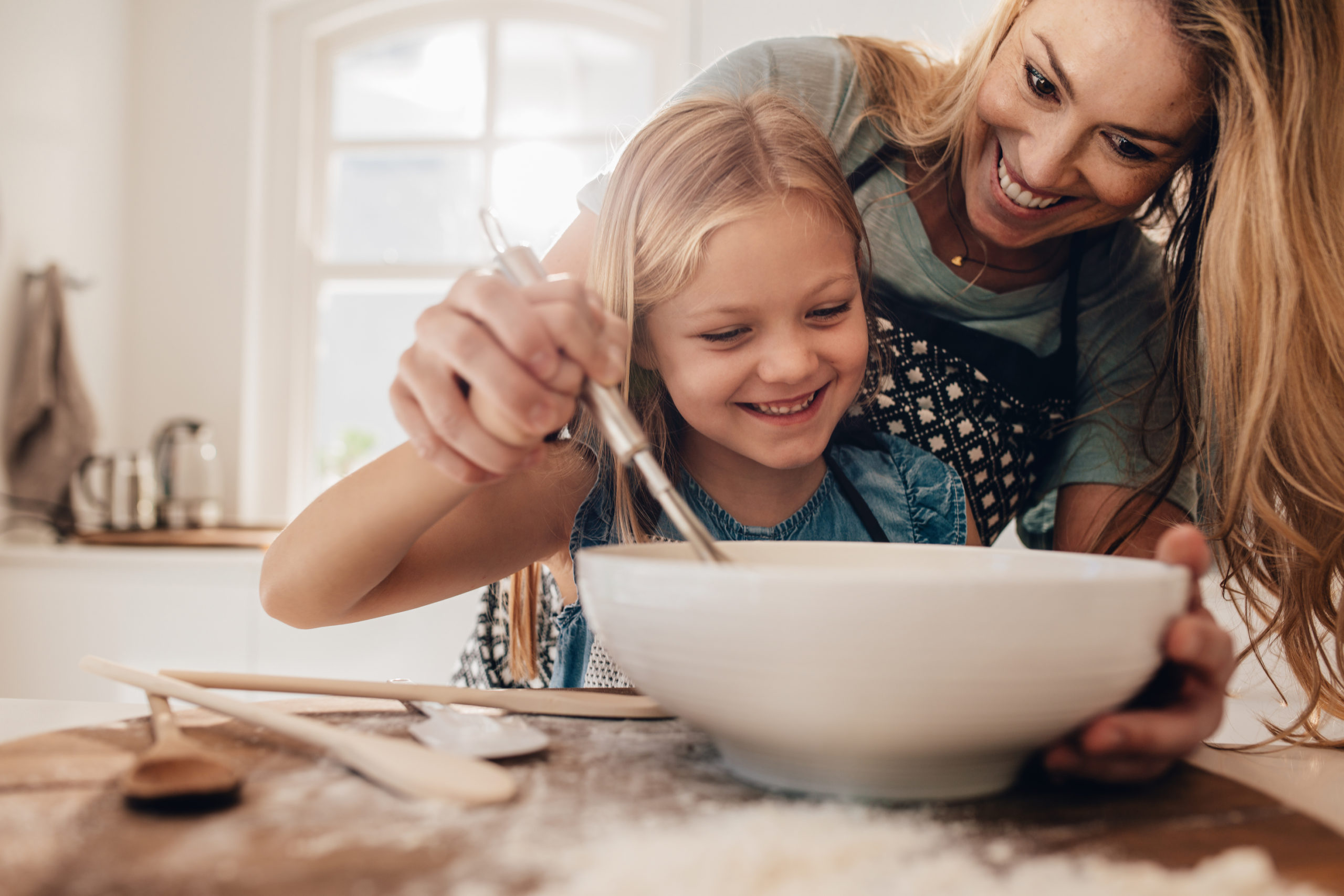As the school year winds down, it might be fun to do some more activities in your kitchen. Turning the kitchen into a classroom is a fun and easy way to bring STEAM education into your home (and this can last into the summer months as well!). I know that some of us have picky eaters to please, so when we can teach and enjoy the finished product with sparkling smiles and second helpings, we know it’s a hit. Today, we’re going to combine learning with a 100% kid-tested and kid-approved recipe: Raspberry Lemon Muffins. They’re delicious for breakfast or a snack and full of fiber and antioxidants.
So, what can we learn from baking these muffins? Baking is all about chemistry and the way that ingredients interact with each other. In this recipe, we’ll use acids and bases to see how they react with each other. We’ll be using both baking soda and baking powder for these muffins. Baking soda and baking powder are both chemical leavening agents. They help baked goods to rise quickly, without the need for yeast. So, what’s the difference between them?
Baking Soda
When baking soda comes in contact with an acid, such as lemon juice, vinegar, or buttermilk as in this recipe, it creates a gas known as carbon dioxide. The carbon dioxide gas forms bubbles which help to make the batter rise in the oven.
Baking Powder
Baking powder already contains baking soda as well as an acid. So, all it needs to create carbon dioxide is liquid such as milk, or water.
I know you’re wondering if baking powder already contains baking soda, why do we need to use both of them? The simple answer is: sometimes you need more leavening than you have acid available in the recipe. It’s all about balance. Another reason to use both baking powder and baking soda is that they help with both browning and flavor.
While the muffins bake, kids can see the leavening in action with this simple science experiment:
- Using your kitchen sink, have kids pour ¼ cup water into two tall glasses.
- Ask them to predict what they think will happen when they add baking powder or baking soda to the water. (Will they see any bubbly carbon dioxide gas? In which glass?)
- Have kids add 1 teaspoon baking powder to one glass and 1 teaspoon baking soda to the second glass. Ask them to share their observations.
(Answer: The glass with baking powder should turn bubbly; nothing will happen in the glass with baking soda.)
- In a third glass, have kids add ¼ cup buttermilk and 1 teaspoon baking soda and observe what happens.
(Answer: The acidic buttermilk will react with baking soda to create bubbles.)
Enjoy the muffins, and don’t forget to have fun while you share a unique learning experience with your kids.
